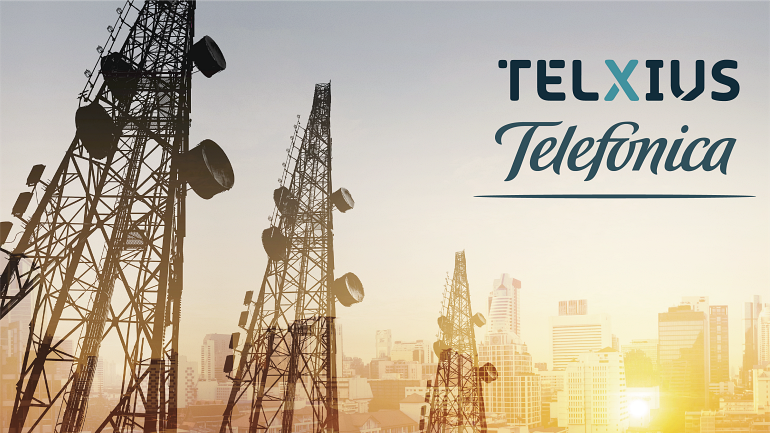As 5G technology continues to mature, leading global wireless carriers are competing to be the first to advance from the non-standalone (NSA) mode of 5G, in which a 4G LTE core is combined with 5G capabilities, to a standalone architecture (SA) 5G network. T-Mobile US, one of the largest carriers providing wireless voice, messaging and data services in the United States, has announced the launch of its SA 5G network. The operator claims to be the first in the world with nationwide coverage using this next-generation wireless technology. In a news release, T-Mobile said that the launch expands its 5G coverage by 30 percent and will cover nearly 250 million people in more than 7,500 cities and towns throughout the US. With faster speeds, lower latency and huge connectivity capabilities, SA 5G signifies the launch of a 5G core network, ending the reliance on legacy LTE architecture. T-Mobile said SA…
The outbreak of the Covid-19 pandemic has impacted industries and businesses all across the globe and has brought the world economy to a halt, with millions of people placed under lockdown. With most of society working and studying from home, the need for technology has increased considerably, and the significant rise in the use of digital tools during social distancing has put the telecommunications sector at the forefront in facilitating the situation. What kind of impact has Covid-19 had on the telecom sector? Now that the global supply chain has been thrown into chaos and the work-from-home concept has become the “new normal“, the need of remote communication has risen significantly so as to ensure business continuity. The telecommunication sector is witnessing significantly higher demands, as they play a key role in facilitating the connectivity required by customers implementing these essential digital tools . Rise of demand for Telco services…
Deutsche Telekom hits 50% 5G population coverage Deutsche Telekom, the largest German telecommunications company, has expanded its 5G connectivity to 3,000 towns across all German states. A total of 18,000 antennas, out of the 30,000 already installed, have been upgraded to support 5G services in the last 5 weeks, and as a result, 50% of Germany‘s population now has 5G coverage. Walter Goldenits, Head of Technology, commented: “The 50 percent is no reason for us to rest on our laurels. The 5G rollout continues with the same intensity. Two thirds of the population are our next target. And we want to achieve this too this year.” Read more at https://tinyurl.com/y4z6fd2m Google Cloud and Orange announce their collaboration Google Cloud and Orange announced that they are partnering up for data, AI and edge computing development. The two companies plan on transforming Orange’s IT infrastructure, developing future cloud services, improving operational efficiency…
Contributed by Maor Efrati, CTO at monogoto My generation grew up in the early days of the internet and global connectivity. The only truly global network was the phone network. Any content or other service was provided by a local operator. We saw the internet as a global network but mostly as a way to share and access information. A huge revolution parallel to the WWW was the OTT ‘over the top’. It’s not an information revolution but a brand new business model for a whole new set of companies to become a service provider without a physical connection to the consumer. OTT has revolutionized the way many businesses operate. In the early 2000s, operators and service providers generated most of their income from all kinds of content: TV, Voice, SMS, Ringtones, Stickers, etc. The internet brought a new wave of companies, technically new service providers, companies that…
Amdocs, a leading software and service provider to communications and media companies, has bought an Ireland based Digital BSS company, Openet, that provides charging, policy and data solutions. Two years after their heated legal dispute, the telecom software company Amdocs has ended the litigation by finally licensing a number of Openet patents. As the telecommunications sector has been trending towards digital transformation for some time now, the merger between the two companies will provide exceptional and wide-ranging opportunities for both enterprises. In recent years, the Ireland-based company, Openet, developed modern cloud-based software and 5G products that are recognised around the world for their innovation. The amalgamation of the two companies is said to offer Amdocs‘s customers advances in 5G technologies, cloud, edge computing and Internet of Things (IoT), as well as an elevated customer experience, policy and data management expertise. Shuky Sheffer, CEO of Amdocs Management, commented:…
Vyopta Introduces Support for Microsoft Teams On Tuesday, Vyopta, a provider of Unified Communications (UC) monitoring and analytics solutions, announced the release of their comprehensive support for Microsoft’s cloud-based UC products including Skype for Business, Microsoft Teams Rooms, Microsoft Teams and Surface Hub. Vyopta is one of the first companies to provide monitoring and analysis services to Microsoft Teams, helping to speed up the deployment of the Microsoft Teams software, simplify troubleshooting and reporting, and improving the service quality of Microsoft’s voice and video calling experience. In the near future, Vyopta will continue to expand its monitoring capabilities, including more advanced and proactive Microsoft Teams alerts. Read more at https://tinyurl.com/y3r396fh Telecom Argentina hit by a major ransomware attack One of Argentina‘s largest Internet Service Providers (ISPs) has suffered a serious ransomware attack. The cybercriminals who carried out the attack, demanded $7.5 million in Monero cryptocurrency from the ISP to regain…
Qualcomm invests $97 million in India’s Reliance Jio Platforms Qualcomm has become the latest high ranking sponsor of the four-year-old Indian company, Reliance Jio Platforms. On Sunday evening, Qualcomm Ventures revealed their plans to invest $97 million in Reliance Jio Platforms and to assist that company launch advanced 5G infrastructure and services for their local customers. Furthermore, Reliance Jio Platforms has introduced cut-rate voice and data plans into the Indian telecommunications market, attracting almost 400 million subscribers. This rapid growth has resulted in the company becoming the most successful operator in the world’s second largest market in less than four years since its establishment. Read more at https://tinyurl.com/y9hponyd Deutsche Telekom explores quantum tech with OPENQKD The German operator Deutsche Telekom, in partnership with the OPENQKD (Open European Quantum Key Distribution) consortium, are preparing to research quantum key distribution (QKD) technologies in order to develop quantum-safe data transmission. In spite of the…
European telcos: We’re ready to “lift the continent out of this recession” The European Telecommunications Network Operators’ Association (ETNO) has released a joint statement calling on EU institutions and national governments to support 5G and fiber rollout, stimulate the uptake of technology, fight misinformation, and focus on digital skills and education. According to ETNO, a new approach is needed to ensure that spectrum auctions are timely and conditions for spectrum assignment support network deployment. Sharing agreements for Radio Access Network (RAN) should be supported and incentivized, as well as all fiber investment models should be adequately encouraged. Moreover, future EU initiatives should dramatically reduce roll-out costs for both mobile and fixed networks. Read more at https://tinyurl.com/yadrfxfg Microsoft’s new Teams features fight video conferencing fatigue Microsoft Team’s brand seeks to fight “Zoom fatigue” and exhaustion of physical isolation with its new updates and features. The news includes a shared background to make participants…
Ujet raises $55 million to expand cloud-based customer support platform Ujet, a leading provider of cloud contact center software, has secured USD 55 million in Series C funding to expand its sales and marketing teams at home and internationally, as well as launch new products and features. The San Francisco-based company already claims to have several high-profile clients, including Google, Instacart, and PayPal’s iZettle. Ujet enables customers to contact support teams through voice, email and messaging, and integrates smartphone cameras so they can easily submit photos and videos documenting problems. With this funding, the company is now well-positioned to capitalize on the increased demand for cloud-based contact center technology. Read more at https://tinyurl.com/y8ayek29 UK security officials tell telcos to stock up on Huawei gear – report The National Cyber Security Centre (NCSC) has suggested that UK telecoms operators stockpile critical equipment to ensure the sustainability of telecoms infrastructure, as political…
Telefonica Deutschland Holding AG, the leading mobile operator in the German market, has announced an agreement to sell about 10,100 telecom sites to the group’s majority-owned tower infrastructure arm Telxius Telecom for EUR 1.5 billion. The acquisition deal includes 10,000 rooftop sites and up to 80 tower sites, as well as an obligation to build 2,400 new sites (BTS). This move will ensure the company’s exceptional future growth in Germany, Europe’s largest telecom market, where a robust deployment by operators is expected to improve mobile broadband coverage and secure the future deployment of 5G. Markus Haas, CEO of Telefonica Deutschland, said, “This is one of the largest and most important transactions in the history of Telefonica Deutschland. It represents an important milestone in focusing our business activities. We are pursuing a clear course based on our growth strategy. Within this strategy, we are focusing on further improving the quality of the O2 network for our…













